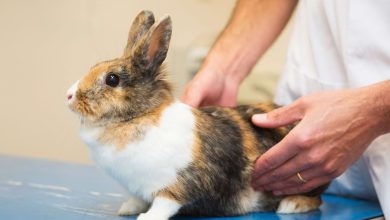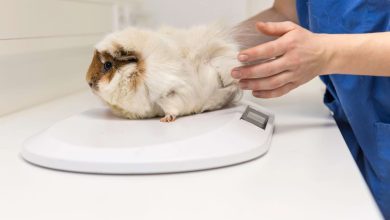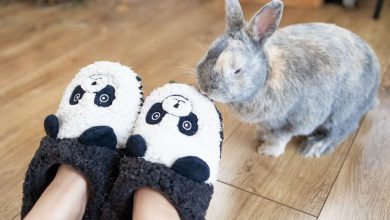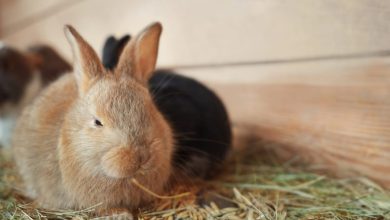The Purpose of a Rabbit’s Double Chin
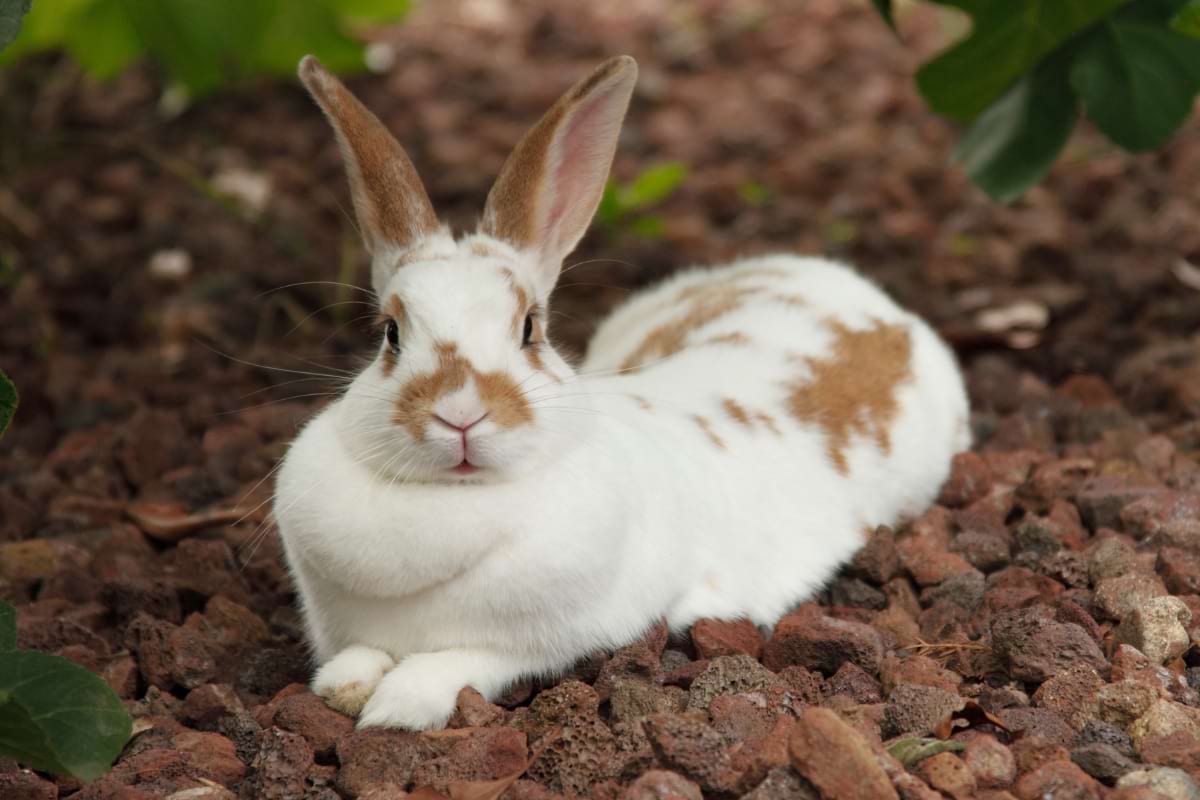
What the heck is that lump that looks like your rabbit has a double chin? Before you send yourself into a panic, I’ll give you the answer. It’s most likely your rabbit’s dewlap. But what the heck is a rabbit dewlap? Is it bad? Does it go away? What is it for?
It can be terrifying to notice a lump forming and growing underneath your rabbit’s chin. Your mind starts spinning with all the worst-case scenarios. But dewlaps are normal and not a cause for worry.
Now that we’ve got the scary stuff out of the way, you’ll learn what that “double chin” is, what it’s for, and more. Keep reading to learn all about rabbit dewlaps.
What Are Dewlaps on a Rabbit?
Rabbit dewlaps are lumps of fat and fur underneath a female rabbit’s chin. Although, some males can develop them too.
Dewlap size can vary, depending on your rabbit’s size, breed, and how early you spay her. On small or medium breeds, they look like a double chin, but they’ll be more prominent on large breeds.
Are Rabbit Dewlaps Normal?
Dewlaps on rabbits are totally normal and not dangerous at all. They’re most visible in lops and other large breeds, especially the Flemish Giant, but pretty common in all rabbit breeds.
Usually, only female rabbits will develop dewlaps, but it isn’t uncommon for your female rabbit NOT to grow a dewlap, especially if fixed early. Male rabbits with dewlaps have happened, but these are rare cases.

Why Do Rabbits Have Dewlaps?
Some say rabbits develop dewlaps for better chances of finding a mate. However, there is no evidence to support this claim. What IS proven is that rabbits have dewlaps for nesting purposes.
Intact female rabbits develop dewlaps for easy access to the fur they need to build a nest. Around two days before giving birth, your rabbit will pull fur from her dewlap to build the nest. Spayed rabbits can have false pregnancies, which would spark the hormones that develop dewlaps.
When Do Rabbit Dewlaps Appear?
Rabbit dewlaps will appear when your rabbit becomes sexually mature (age ranges from 3-9 months, depending on the breed). Rabbits spayed before that time will likely not grow a dewlap at all. However, if the dewlap is already growing, spaying will only slow it down.
How Big Should a Rabbit’s Dewlap Be?
As I said before, dewlap size depends on your rabbit’s breed and size. Over time, your rabbit’s dewlap will grow, reaching its full size at 2-3 years old.
Flemish Giants and other giant breeds often sport large dewlaps that look almost like infinity scarves, while small rabbit breeds are likely to grow a smaller lump resembling a double chin. It’s also worth mentioning that being overweight can cause your rabbit’s dewlap to be larger than normal.
Can a Dewlap Be Too Big?

It’s perfectly normal for your rabbit to have a dewlap. But there are some instances, especially with larger breeds, where a dewlap can prevent your rabbit from cleaning herself properly.
An overgrown dewlap can also inhibit eating and will be much more likely to develop a moist dewlap, which can cause skin infections and more issues. If your rabbit’s dewlap is growing fast, you should see a vet. It could be a gland problem disguised as a dewlap.
Do Dewlaps Go Away
Rabbits do not lose their dewlaps. If your rabbit has an oversized dewlap because of obesity, it may shrink some with dietary adjustments. But once a rabbit’s dewlap starts growing, she’ll always have it, even if she’s spayed.
Spaying your rabbit may halt the growth, making the dewlap smaller than others in that breed. But it won’t make it disappear. There are some cases where a vet may recommend removing the dewlap.
Can You Get Rid of a Rabbit’s Dewlap?
Rabbit dewlaps are normal. And, in most cases, you can’t get rid of them. However, as I said before, your vet may remove it in health-threatening cases.
Rabbit Dewlap Problems

Again, rabbit dewlaps can become a problem if they get too big or if they’re always getting wet. Let’s talk more about those issues.
Enlarged Dewlaps
At their core, dewlaps are pockets of fat. So, if your rabbit gains weight, her dewlap will get bigger. If it gets too big, this can prevent her from grooming herself properly, causing a domino effect of health problems, most notably, poopy butt and chronic moist dermatitis.
And, if your rabbit can’t eat properly because of her dewlap, she could develop GI Stasis. Remember, your rabbit can’t survive long without eating or drinking.
Chronic Moist Dermatitis
Also called ‘Wet Dewlap,’ chronic moist dermatitis is a skin infection rabbits get on their dewlaps due to constant exposure to moisture. It can be caused by more than just an enlarged dewlap. It can also come with dental issues, poor grooming habits due to old age, and more.
The dewlap will lose patches of fur and become red and sore-looking. Soon, the skin will turn green and may start to attract flies, which can lead to your rabbit developing flystrike.
If your rabbit develops wet dewlap, a vet can prescribe the proper topical treatment and, if needed, may recommend surgery to remove your rabbit’s dewlap.
How to Prevent Your Rabbit From Developing Dewlap Issues
First things first. The only way you can prevent your rabbit from developing a dewlap is by getting her spayed early. And even then, she may still grow one.
You can prevent your rabbit’s dewlap from overgrowing by keeping her at a healthy weight. Also, make sure that her chin area is always dry. If you notice that it’s wet, dry it with a towel.
And, of course, if the problem persists, see a vet.
Conclusion
A rabbit’s dewlap is a natural sign of maturity in female rabbits, although some larger males can have them too. They come in different sizes, usually bigger dewlaps for larger breeds.
Dewlaps exist to help pregnant females build nests made of fur for their babies. An unspayed rabbit is much more likely to develop a dewlap than a spayed rabbit. But don’t be too surprised if your spayed rabbit grows one because once it starts growing, you can’t stop it. And they never go away.
Usually, dewlaps aren’t a problem, but they CAN become one, so make sure to keep your rabbit at a healthy weight and that her dewlap stays dry.
